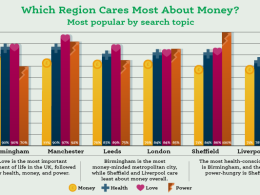When embarking on the journey of purchasing a new abode, financing can present itself as the most intricate aspect. Traditional mortgages, while reliable, may not always cater to the urgency of securing one’s dream property. In such exigent situations, a viable solution emerges in the form of bridging loans. These transient financial instruments adeptly bridge the gap between acquiring a new home and offloading an existing property. Within the following discourse, we shall delve into the intricacies of bridging loans, meticulously scrutinising their merits and demerits, thus assisting you in making an informed decision.
Advantages of Bridging Loans:
- Expedited Access to Capital:
A preeminent virtue of bridging loans lies in their capacity to furnish swift access to much-needed funds. Conventional mortgage processes often entail protracted timelines, potentially hindering the acquisition of your desired domicile.
- Versatile Repayment Alternatives:
Bridging loans offer unparalleled flexibility in terms of repayment. Typically structured as interest-only loans, they confer the advantage of reduced monthly instalments, affording respite during the interlude while your extant property awaits a buyer.
- Liberation from Property Chain Encumbrances:
In a property chain, the slightest hiccup in a single transaction can reverberate through all involved parties, culminating in a cascade of setbacks. By availing oneself of a bridging loan, one breaks free from these constricting chains, rendering their offer conspicuously attractive to sellers and extinguishing the spectre of a failed sale occasioned by chain-related issues.
Drawbacks of Bridging Loans:
- Elevated Interest Rates:
Bridging loans, being purpose-built for short-term exigencies, are accompanied by higher interest rates, a precautionary measure undertaken by lenders to mitigate their risk exposure.
- Incurred Fees and Expenses:
The costs associated with bridging loans encompass sundry fees, including arrangement, legal, and valuation fees, augmenting the overall financial burden.
- Constrained Eligibility Criteria:
Bridging loans predominantly favour individuals boasting substantial equity in their extant assets. Lenders might mandate stringent minimum down payments, effectively erecting barriers for certain properties or first-time homebuyers seeking qualification. This restricted eligibility landscape potentially limits the accessibility of bridging loans to a select cohort of borrowers.
In summation, bridging loans serve as a valuable tool for prospective homebuyers in pursuit of swift and agile financing solutions. Their advantages encompass rapid capital procurement, seamless transitions, and adaptable repayment terms. Nonetheless, it behooves the discerning buyer to exercise due diligence, considering the implications of elevated interest rates, ancillary fees, financial risks, and the constraints imposed by eligibility criteria specific to bridging loans, all contingent upon the unique intricacies of their individual circumstances.









